Growing Pains and Gains: Our Hydroponic Journey with Lettuce Grow

We invested in an indoor hydroponic garden about a year ago. My wife and I have been on a journey to try to eat more cleanly, and we thought this was an excellent way to expose our daughter to how our food is produced and how much work it is, as well as have a fresh farm-to-table experience in our own home.
Why Hydroponics
Our hydroponic farmstand wasn’t the first time we tried growing our food. We first tried the traditional (and cheaper) route of outdoor planters. We took a bunch of herbs from various big-box stores and planted them in a few small raised beds outside our house. At first, we loved having our plants, so we often headed out to the garden to grab rosemary, thyme, oregano, and basil. We quickly learned that 1) not all plants love the hot and humid Florida weather, 2) there are a lot of bugs that require constant pesticide applications around our house that we didn’t want near our food, and 3) in general, we aren’t the best gardeners, or so we thought.
After extensive research on indoor gardening, we chose the hydroponic route. There are a few options for hydroponic farmstands. We chose a larger unit that would enable us to grow larger plants. We ordered the 24-plant Lettuce Grow Indoor Farmstand, glow ring kit, dolly, and grow pack for some seedlings.
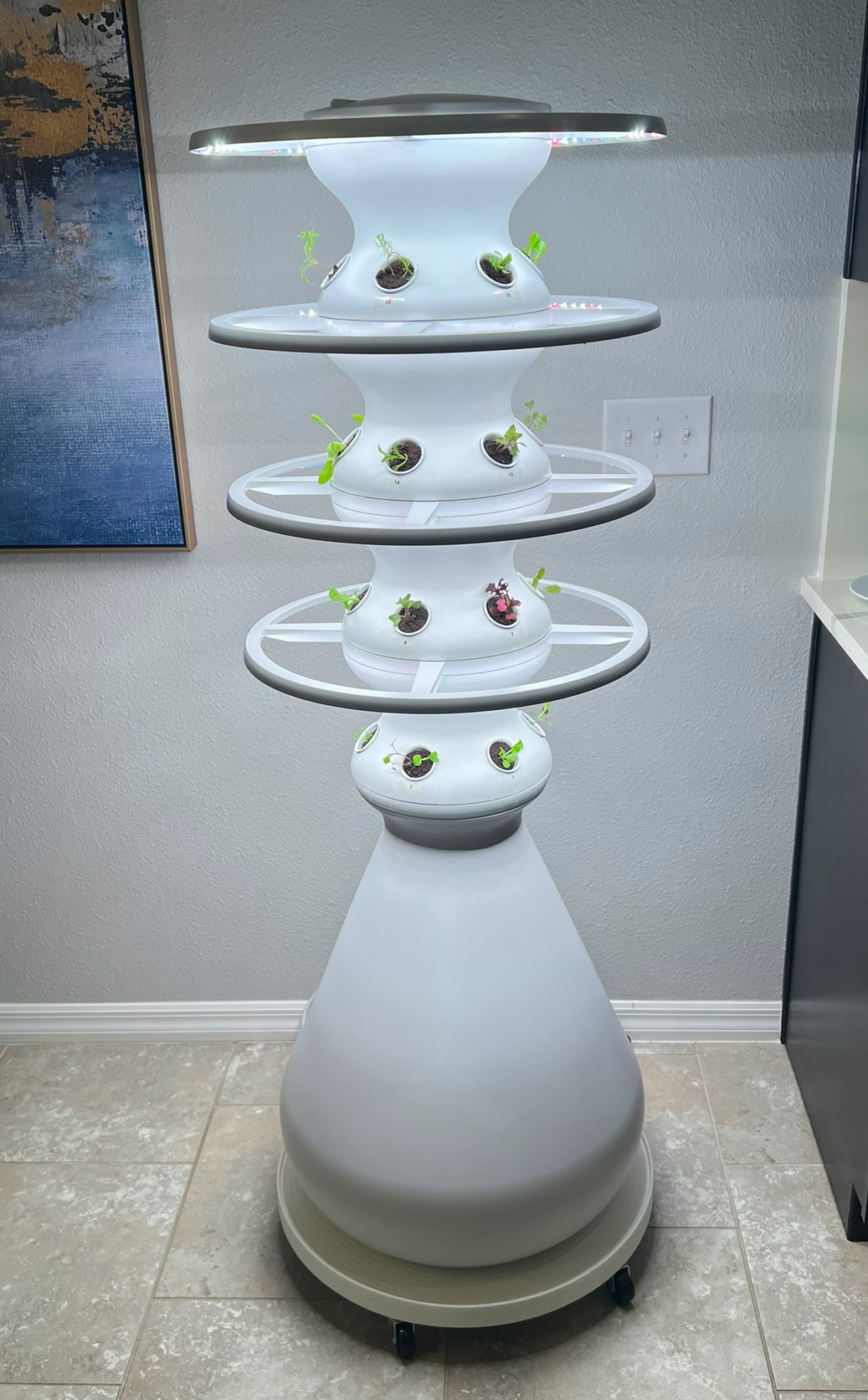
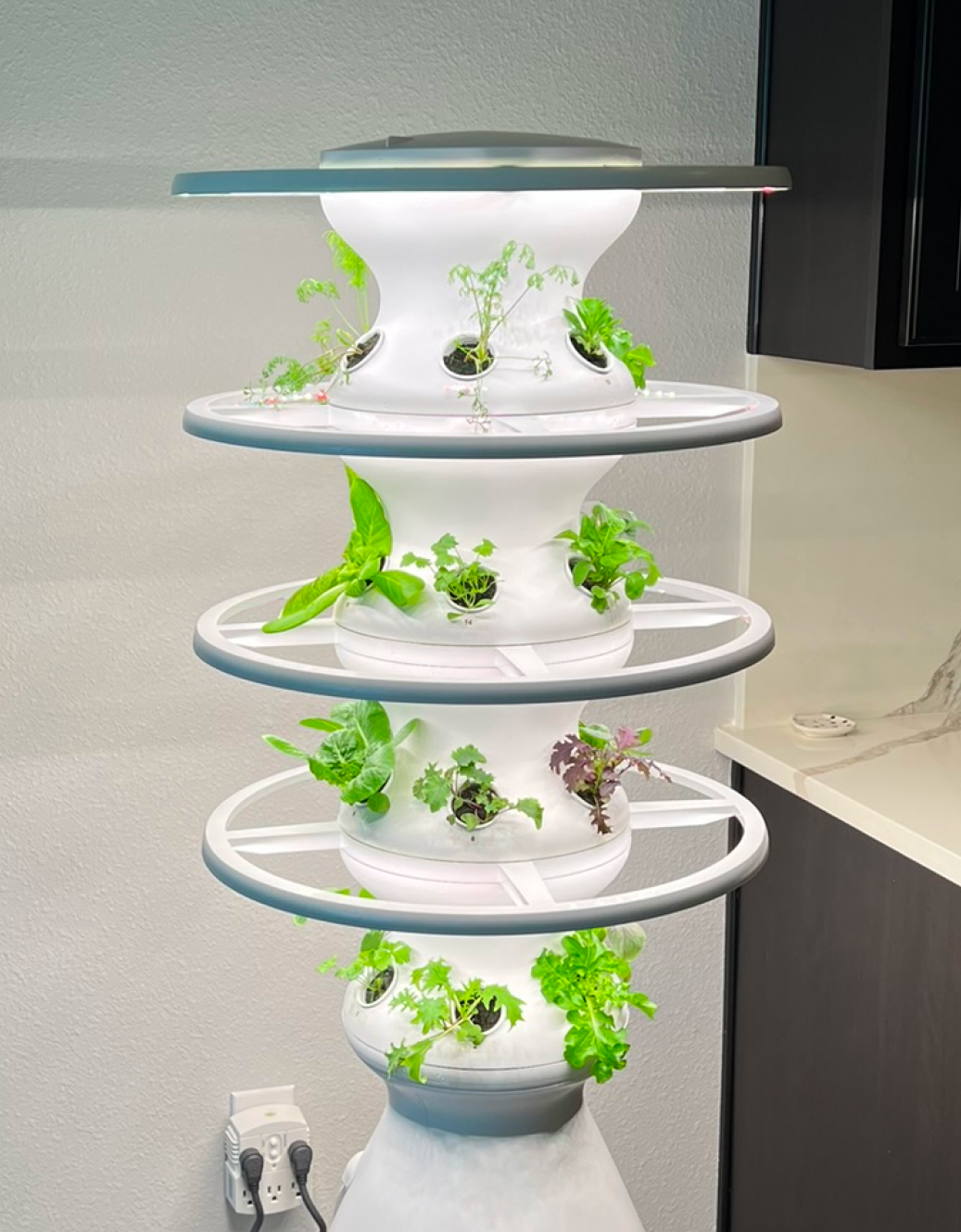
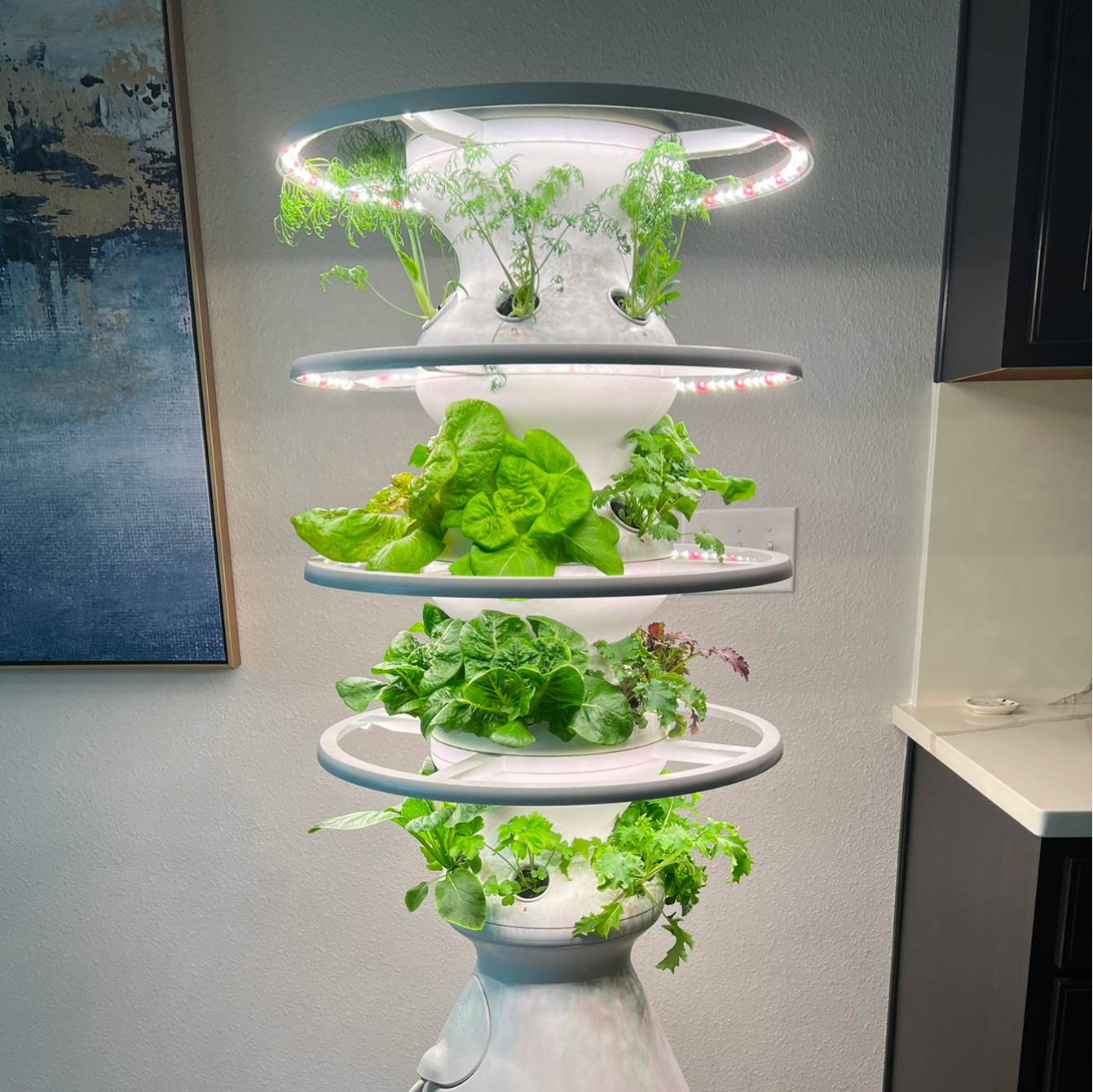
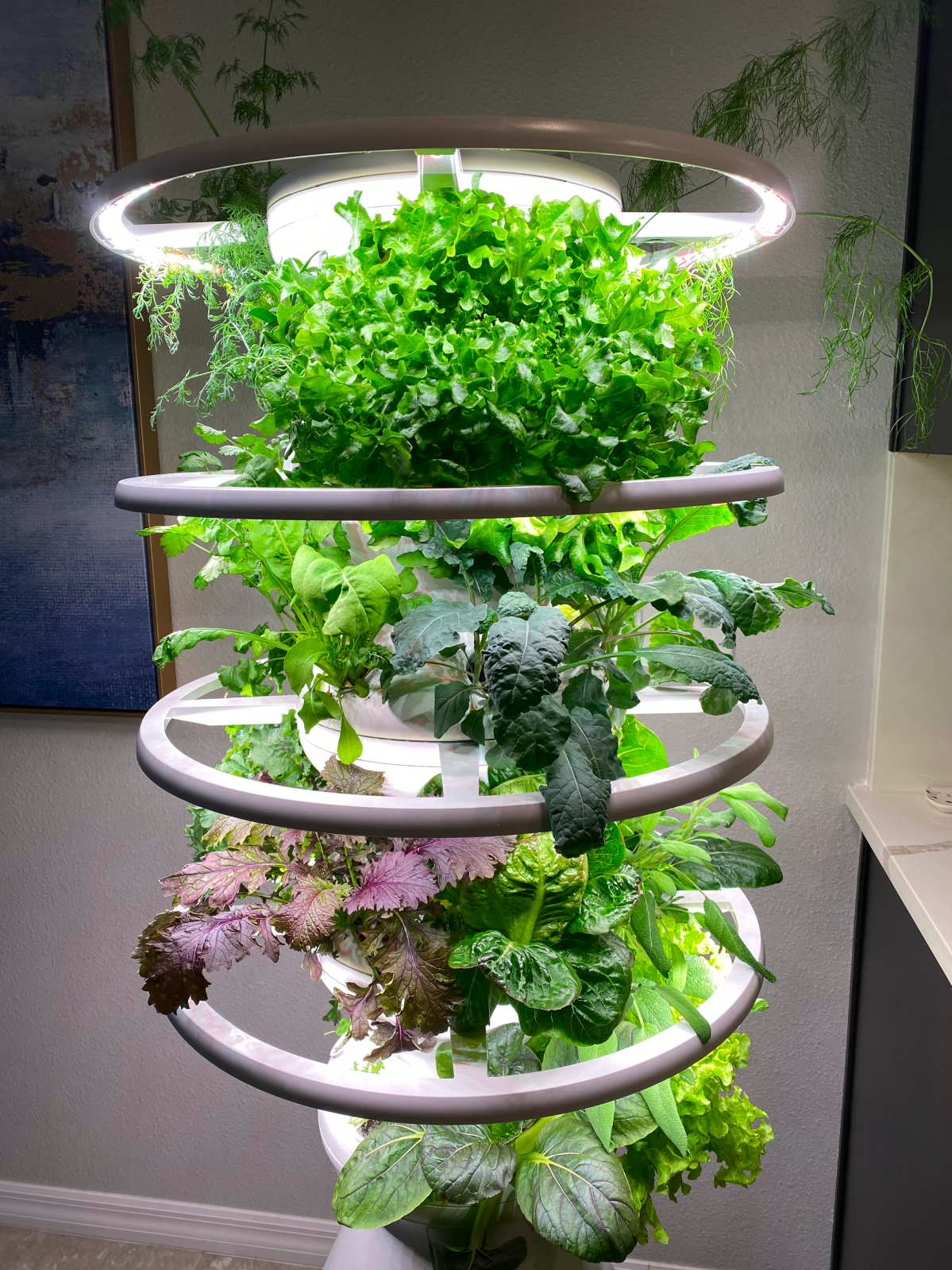
Initial Experience and Setup
A few days after we placed our order, our farmstand arrived at our house. The box was BIG, much bigger than we had expected. We were thrilled to immediately break into the boxes and set up our farmstand. The assembly was simple. The parts snap together and lock into place, and there is a video walkthrough in their app. We placed the farmstand right in our kitchen.
We waited a day or so longer for the seedlings to arrive. Here is our first seedling ordered.
- Classic Butter Lettuce
- Red Bok Choy
- Green Oakleaf (2)
- Italian Parsley
- Cilantro
- Lolla Rossa Lettuce
- Dappled Butter Lettuce
- Sage
- Dazzling Blue Kale (2)
- Red Russian Kale
- Romain (2)
- Truchas Mini Romain
- Dill (2)
- Astro Arugula
- Komatsuna
- Fennel
- Red Mizuna
- Dianthus
- Garlic Chives
- Greens Mix
It was time to finish setting up the farmstand by adding water and nutrients to prepare it for the plants. The process was easy. The Lettuce Grow app makes it easy; it provides videos and written walk-throughs of every process. First, you fill it with water. It takes a lot of water. Our farmstand is close to our house’s back door, so we can use a garden hose to fill it. Then, you add the initial nutrients. Lastly, you check the PH and adjust accordingly. The box includes all the fertilizer, measurement tools, and PH tools.
After that it’s time to add the seedlings and get growing!
What we like, dislike, and have learned.
What we love
Having the farmstand in the house has been a great experience. Growing fresh food in your kitchen and watching it grow has been educational and fulfilling. Here are a few things we like about having the farmstand.
- Weekly maintenance and initial setup is easy.
- The farm-to-table experience makes it easy to grab a lettuce leaf for a burger, chives for salads, mashed potatoes, and fresh basil for pasta, and make a salad from lettuce grown right in your kitchen.
- We have learned so much about gardening, from weekly maintenance to growing new plants from seeds.
- It’s a statement. People are always surprised when they enter our house for the first time and see a giant glowing garden right in the kitchen.
Things we didn’t consider
- It’s not quiet. The watering system runs for about 15 minutes an hour, and it is a bit louder than we expected it to be. It’s almost as if there were a water fountain in your kitchen.
- It’s bright. This is a good thing in some ways, but in others, it is not so good. The four grow rings emanate a bright daylight glow. During the day, it’s great for your circadian rhythm, but at night it feels really bright. It’s opposite our television and creates a pretty big glare until it shuts off. It took a little while to get used to it.
- Growing plants in your house can be dirty. As the plants grow, they drop leaves, and in our case, our cat enjoys whacking the leaves off the plants on the lower levels.
Drawbacks and things we don’t like
- The quarterly resets are A LOT of work. After about four months, Lettuce Grow recommends completely disassembling your farmstand and thoroughly cleaning it. This process is more challenging than we expected. We cheat by taking it outside and pressure washing it. The whole process takes about an hour.
- The white unit is more challenging to keep clean than we expected. The leaves from the plan can dry onto it; unless you’re cleaning it daily/weekly, it can look pretty dirty.
- It’s not cheap. We purchased the unit to grow our food and learn from the experience. If you think growing your own food will save you money, it’s going to take a long time to break even.
Our favorite plants
Lettuce has been, by far, the easiest to grow. We’ve had the most success with butter lettuce and romaine. Our herbs have also thrived; basil, cilantro, and parsley are easy to grow and maintain, though they can get quite large if not regularly trimmed. Greens like kale and bok choy have become staples in our farmstand as well.
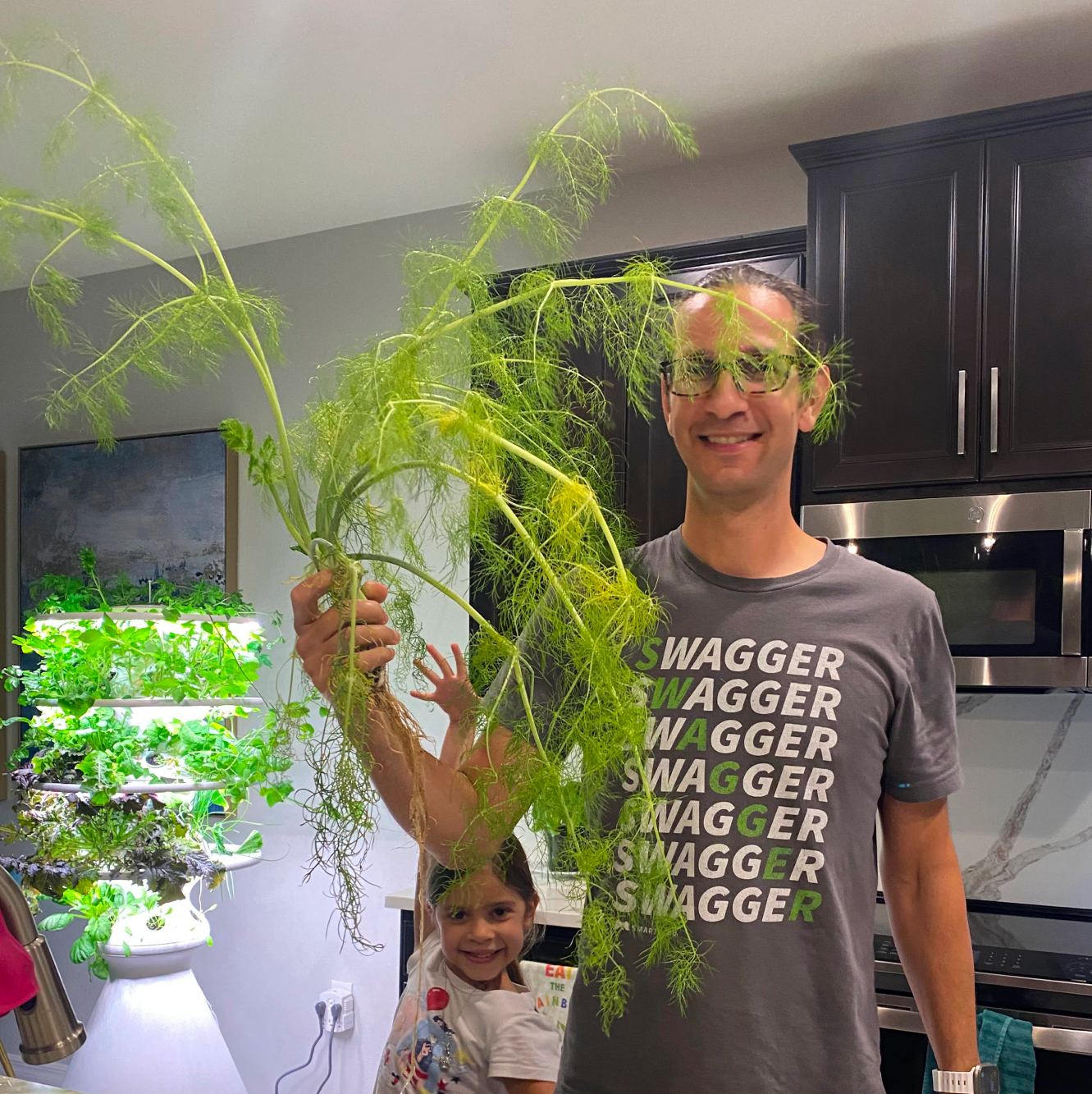
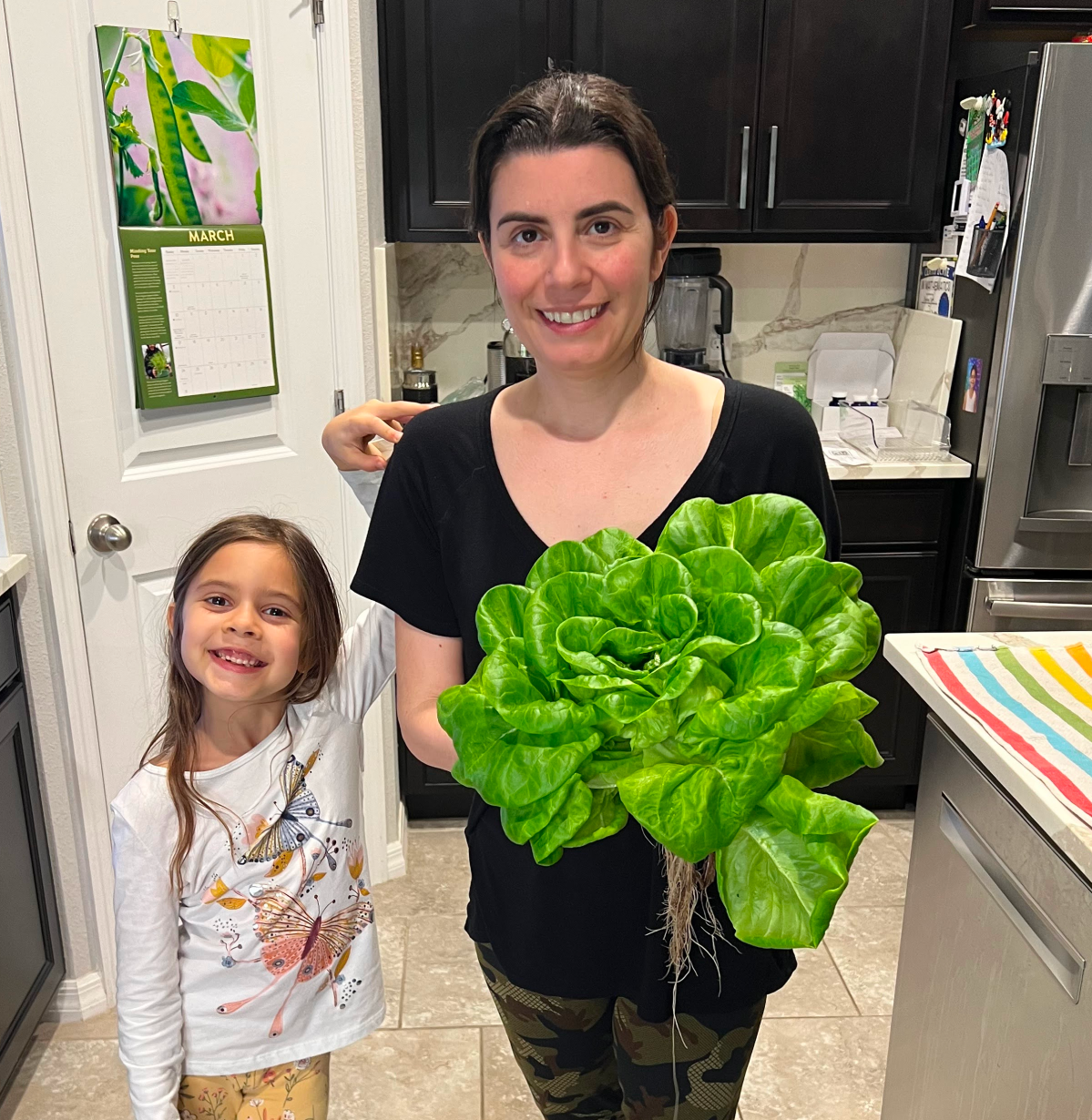
Final Thoughts
Ultimately, our journey with the Lettuce Grow hydroponic garden has been a mix of successes, surprises, and a few challenges. While it hasn’t been perfect, we’ve loved the convenience of having fresh greens and herbs at our fingertips and the satisfaction of growing them ourselves. Maintenance can sometimes feel like an extra chore, and a few plants just didn’t make the cut, but we’ve learned a lot along the way.
For us, it’s been about more than just fresh produce—it’s been about experimenting, learning, and enjoying a small piece of gardening right at home. If you’re considering starting your indoor garden, just be prepared to embrace the ups and downs. Despite the quirks and lessons we’ve picked up along the way, our Lettuce Grow experience has added a fresh twist to our meals and brought a touch of green into our home.